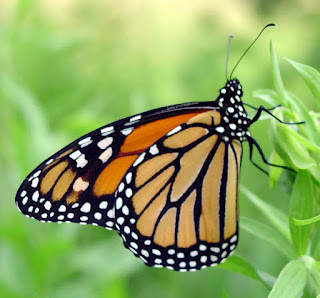Butterfly Mountain refers to an area of the Sierra Madre mountains in southern Mexico where approximately one billion Monarch butterflies migrate to hibernate every winter. The Monarchs travel south from Canada and across north America down through Texas and Mexico, before settling in the mountains of Michoacán state. The Mountain of Butterflies was discovered in 1975 by Ken Brugger and Catalina Trail as well as Canadian Zoologist Fred Urquhart who tagged the butterflies and followed their trail south to the Oyamel trees found in these regions of the Sierra Madre mountains where they live between October and March.
The area was recognised for its ecological importance and became officially known as the Monarch Biosphere Butterfly Reserve in 1980, and then went on to gain World Heritage status in 2008. The Monarchs cluster together on trees during the winter months to conserve heat, and turn the branches a bright orange. The limbs of the trees appear to sag because of the sheer numbers of the millions of Monarchs that land on them.
Even though Butterfly Mountain was 'discovered' in 1975, the local inhabitants of the area - the Purépecha, have known about the phenomenon for centuries, and describe the sound of millions of Monarchs taking flight to go home in March as like 'light rain'.
The Monarch migration also coincides with the annual Mexican 'Day of The Dead' festival where people gather to remember and pray for family and friends who have died, and locals believe that the millions of butterflies that descend on the area are the souls of people's ancestors returning for their annual visit.
The Monarch migration also coincides with the annual Mexican 'Day of The Dead' festival where people gather to remember and pray for family and friends who have died, and locals believe that the millions of butterflies that descend on the area are the souls of people's ancestors returning for their annual visit.






